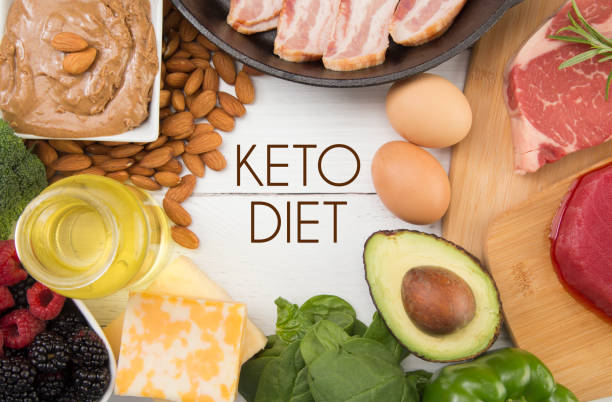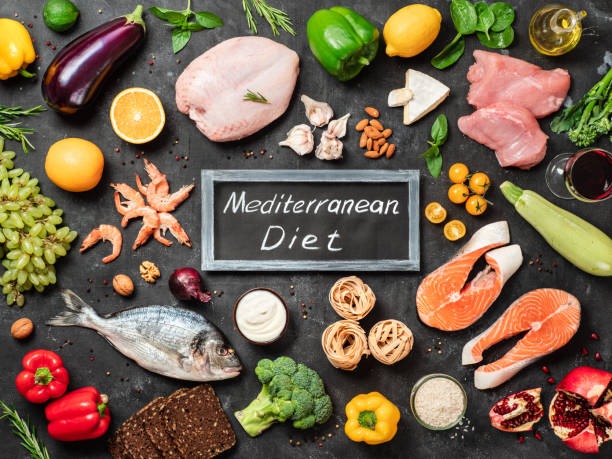Introduction
Picking the right diet can feel overwhelming. With so many choices, how do you know which one fits your lifestyle and health goals? The Keto, Paleo, and Mediterranean diets are three of the most popular options today. Each offers unique benefits, but they also have important differences that may impact your decision.
In this guide, we’ll explore these three diets, highlight their pros and cons, and help you determine which one best supports your health and wellness journey. Whether you’re looking to lose weight, boost energy, or improve overall well-being, understanding these diets can help you make an informed choice.
What Is the Keto Diet?

The Ketogenic (Keto) diet is a high-fat, low-carb eating plan designed to shift the body’s metabolism. By drastically reducing carbohydrate intake, the body enters a state called ketosis, where it burns fat for energy instead of relying on glucose from carbs.
Originally developed to help control epilepsy, the Keto diet has since gained widespread attention for its potential benefits, including weight loss, improved blood sugar control, and enhanced mental clarity. Many people follow this diet to boost fat burning and support overall metabolic health.
Key Features of Keto
The Keto diet focuses on a specific balance of macronutrients to keep the body in ketosis. Here are the main features:
- High fat intake – About 70-80% of daily calories come from healthy fats.
- Low carb consumption – Only 5-10% of daily calories come from carbohydrates.
- Moderate protein – Around 10-20% of daily calories come from protein sources.
- Emphasizes high-fat foods – Common choices include fatty meats, eggs, dairy, nuts, seeds, and healthy oils like coconut and olive oil.
- Strictly limits sugar and carbs – Foods like grains, starchy vegetables, and most fruits are restricted to maintain ketosis.
By following this approach, the body shifts from using carbohydrates for energy to burning fat efficiently.
Benefits of Keto
The Keto diet offers several potential health benefits, making it a popular choice for weight loss and overall wellness.
- Supports weight loss – Since the body burns fat for fuel, many people experience faster and more efficient weight loss.
- Improves blood sugar control – By reducing carb intake, the diet helps stabilize blood sugar levels, which may benefit those with type 2 diabetes.
- Boosts mental clarity – Many Keto followers report improved focus, better concentration, and sustained energy throughout the day.
- May reduce inflammation – Ketones, the molecules produced during ketosis, are believed to have anti-inflammatory effects, which could support overall health.
These benefits make Keto an appealing option for those looking to lose weight, manage blood sugar, or enhance brain function.
Drawbacks of Keto
While the Keto diet has many benefits, it also comes with some challenges that may make it difficult for some people to follow long-term.
- Keto flu – Many experience temporary symptoms like fatigue, headaches, dizziness, and irritability when transitioning into ketosis. This usually lasts a few days as the body adapts.
- Difficult to maintain – The strict carb limit can make dining out and social events challenging, as many common foods are restricted.
- Potential nutrient deficiencies – Since the diet limits fruits, whole grains, and some vegetables, it may lead to lower fiber intake and missing key vitamins and minerals.
- Possible impact on cholesterol – Some people see an increase in LDL (“bad”) cholesterol due to the high fat intake, which could affect heart health.
These drawbacks highlight the importance of careful planning and monitoring when following the Keto diet to ensure it remains balanced and sustainable.
What Is the Paleo Diet?

The Paleolithic (Paleo) diet, often called the “caveman diet,” is based on the foods that early humans are believed to have eaten. The idea behind this diet is that our bodies function best when we consume natural, whole foods similar to what our ancestors ate before farming and processed foods became common. By focusing on unprocessed meats, fish, vegetables, fruits, nuts, and seeds, the Paleo diet aims to support better digestion, energy levels, and overall health.
Key Features of Paleo
The Paleo diet focuses on whole, natural foods while eliminating processed ingredients. Here are its main features:
- Rich in protein and healthy fats – Encourages lean meats, fish, nuts, and healthy oils for sustained energy.
- Eliminates processed foods – Avoids artificial additives, preservatives, and highly refined products.
- No grains, dairy, or legumes – Foods like wheat, rice, beans, and dairy products are excluded to mimic early human diets.
- Emphasizes whole foods – Prioritizes fresh fruits, vegetables, nuts, seeds, and grass-fed or free-range meats.
- Avoids refined sugar and artificial ingredients – Focuses on natural sources of sweetness, such as honey or fruit, while cutting out added sugars and chemicals.
By following these principles, the Paleo diet aims to support better digestion, energy levels, and overall health.
Benefits of Paleo
The Paleo diet focuses on whole, natural foods, which may offer several health benefits.
- Encourages whole, nutrient-dense foods – Eating fresh fruits, vegetables, lean meats, and healthy fats provides essential vitamins, minerals, and antioxidants for overall wellness.
- May reduce inflammation – Cutting out processed foods, refined sugars, and artificial additives can help lower inflammation, which is linked to many chronic diseases.
- Supports weight loss and muscle growth – With a focus on protein and healthy fats, the diet helps maintain muscle while promoting a healthy metabolism.
- Improves gut health – Eliminating processed foods and grains may reduce bloating and support better digestion, leading to improved gut function.
By emphasizing natural, unprocessed foods, the Paleo diet can help improve overall health, boost energy levels, and support long-term wellness.
Drawbacks of Paleo
While the Paleo diet has many benefits, it also comes with some challenges that may make it harder to follow long-term.
- Restrictive food choices – Cutting out grains, legumes, and dairy can limit food variety, making meal planning more difficult.
- Can be expensive – Prioritizing organic produce, grass-fed meats, and wild-caught seafood can significantly increase grocery costs.
- May lack key nutrients – Avoiding dairy can lead to lower calcium intake, which is important for bone health, while skipping whole grains may reduce fiber intake, which supports digestion.
Despite these challenges, careful planning can help ensure a balanced and nutritious Paleo diet.
What Is the Mediterranean Diet?

The Mediterranean diet is based on the traditional eating habits of people in countries like Greece, Italy, and Spain. Known for its focus on fresh, whole foods, this diet is often considered one of the healthiest in the world. It emphasizes heart-healthy fats, lean proteins, and plenty of fruits and vegetables. Doctors and nutrition experts frequently recommend it for its potential benefits in supporting heart health, reducing inflammation, and promoting overall well-being.
Key Features of the Mediterranean Diet
The Mediterranean diet emphasizes fresh, whole foods and heart-healthy ingredients. Here are its main features:
- Rich in plant-based foods – Prioritizes fruits, vegetables, whole grains, legumes, and nuts for essential nutrients and fiber.
- Includes healthy fats – Uses olive oil as the primary fat source and incorporates fatty fish like salmon and sardines for omega-3 benefits.
- Moderate dairy and lean meats – Allows small amounts of dairy, such as yogurt and cheese, along with lean proteins like poultry and fish.
- Low in processed foods and added sugars – Focuses on natural, minimally processed ingredients while limiting refined sugars and unhealthy fats.
- Allows moderate wine consumption – Red wine, in small amounts, is included, often enjoyed with meals in traditional Mediterranean cultures.
By following these principles, the Mediterranean diet supports heart health, weight management, and overall well-being.
Benefits of the Mediterranean Diet
The Mediterranean diet is known for its numerous health benefits, making it a popular choice for long-term wellness.
- Supports heart health – Research links this diet to a lower risk of heart disease and stroke (source), thanks to its focus on healthy fats and nutrient-rich foods.
- Balanced and sustainable – Unlike restrictive diets, it offers flexibility, making it easier to maintain over time without feeling deprived.
- Packed with antioxidants and fiber – A diet rich in fruits, vegetables, and whole grains helps support digestion, boost immunity, and reduce the risk of chronic diseases.
- Promotes brain health – Some studies suggest it may lower the risk of Alzheimer’s and slow cognitive decline as people age.
- Encourages longevity – Populations that follow this diet tend to live longer, healthier lives, likely due to its emphasis on whole, nutrient-dense foods.
By focusing on fresh, natural ingredients, the Mediterranean diet provides lasting health benefits while being enjoyable and easy to follow.
Drawbacks of Mediterranean Diet:
- Weight loss may be slower: Since it’s not focused on rapid fat burning like Keto, weight loss tends to be more gradual.
- May not suit those with specific dietary restrictions: Includes grains and dairy, which some people avoid.
- Can be high in fats and calories: If not portion-controlled, high-fat foods like olive oil and nuts can lead to weight gain.
Keto vs. Paleo vs. Mediterranean: A Side-by-Side Comparison
| Feature | Keto Diet | Paleo Diet | Mediterranean Diet |
|---|---|---|---|
| Carb Intake | Very Low | Moderate | Moderate |
| Fat Intake | High | Moderate | High (healthy fats) |
| Protein Intake | Moderate | High | Moderate |
| Food Restrictions | No grains, sugar, or high-carb foods | No grains, dairy, or legumes | No processed foods, low red meat |
| Best For | Fast weight loss, blood sugar control | Whole-food eating, reducing inflammation | Heart health, balanced nutrition |
| Sustainability | Difficult | Moderate | High |
| Common Foods | Meat, cheese, nuts, oils | Meat, fish, veggies, nuts | Fish, olive oil, grains, legumes |
Which Diet Is Right for You?
Each of these diets has unique benefits, so the best choice depends on your health goals and lifestyle preferences.
- Choose Keto if – You want rapid weight loss, better blood sugar control, and are comfortable following a high-fat, low-carb lifestyle. This diet is ideal for those who don’t mind cutting out most carbs, including bread, pasta, and sugary foods.
- Choose Paleo if – You prefer natural, whole foods and are willing to avoid grains, dairy, and legumes. This diet is a great option for those looking for a high-protein, unprocessed eating plan that mimics early human diets.
- Choose Mediterranean if – You want a balanced, flexible diet that supports heart health, brain function, and longevity. This diet allows for moderate indulgence, making it easier to follow long-term while still enjoying a variety of nutrient-rich foods.
By considering your personal health goals and food preferences, you can choose the diet that best fits your lifestyle.
Final Thoughts
Each diet has its strengths and weaknesses. The best choice depends on your goals, lifestyle, and food preferences.
- Want fast weight loss? Keto may be the answer.
- Prefer a diet rich in protein and whole foods? Paleo could be ideal.
- Looking for a balanced, heart-healthy diet? The Mediterranean diet might be the best fit.
Ultimately, the best diet is the one you can maintain long-term while meeting your health goals.
Are you currently following one of these diets? Which one works best for you? Share your experience in the comments below!



